5 Most Common Ant Species in the United States
5 Most Common Ant Species in the United States
1. Argentine Ants (Linepithema humile)
Origin: True to their name, these ants are native to Northern Argentina near the Paraná River but have since spread to many countries Appearance: Dull brownish/black color, six legs, and an uneven thorax shape Size: 3 – 3.5mm average length Colony Size: Roughly 10,000 workers in a single colony. However, when their colonies get large, they often split and operate next to one another as sister colonies, meaning there can sometimes be a few colonies in one area. Habitats: These ants tend to inhabit urban areas and stick near sources of water Behavior: These ants are some of the most common home invaders in the United States and can typically be found raiding kitchens in droves. Thankfully, while they are a massive nuisance, these ants do not bite, meaning they don’t pose a direct treat to humans. However, they can carry and spread grime and pathogens throughout the home as they scurry along countertops, scale pantries, and slink across the dishes in your cupboards. 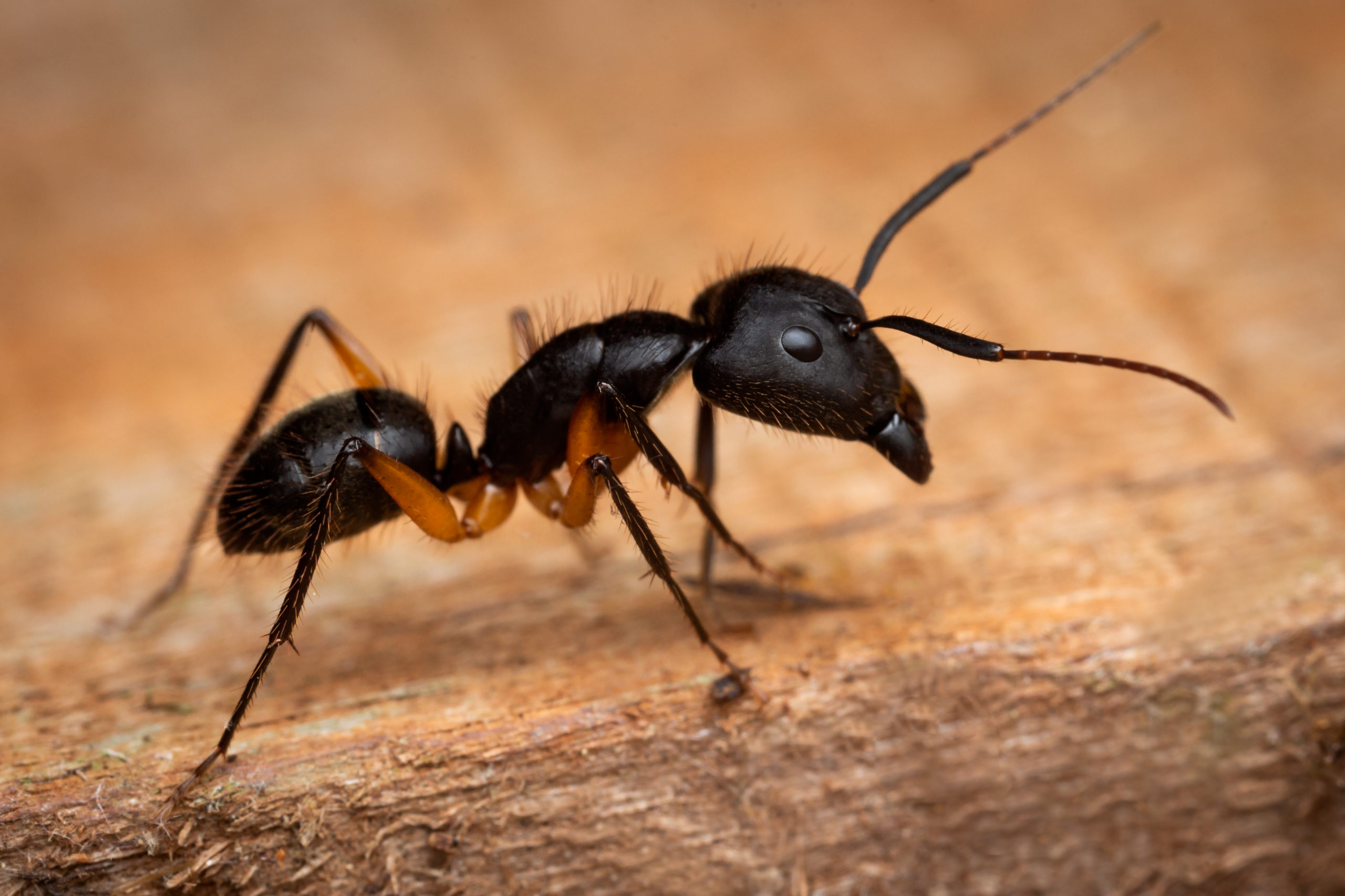
2. Carpenter Ants (Camponotus pennsylvanicus)
Origin: Different species of carpenter ants can be found throughout the world. The ones we see in the U.S. are native to the country or have emigrated from Canada at some point. Appearance: These large ants range from black to reddish black in color and members of the same colony can vary in size from one another. Size: Workers tend to range between 9.5 – 12.7mm in length while queens can measure up to 25.4mm long (1inch). Colony Size: These colonies range between 3,000 to 10,000 colony members. Habitats: Carpenter ants make their nests wherever they can find wood. Be that a log, dead tree, fence, wall, ceiling, floor, furniture, etc. Behavior: These ants are often mistaken for termites as they are woodboring insects. However, unlike termites, they do not consume the wood. Rather, they simply bore through it in order to construct their complex nests. This makes them a majorly concerning pest for residents and business owners as an infestation can lead to a drastic amount of damage to property and even potentially weaken structures enough to cause collapses. 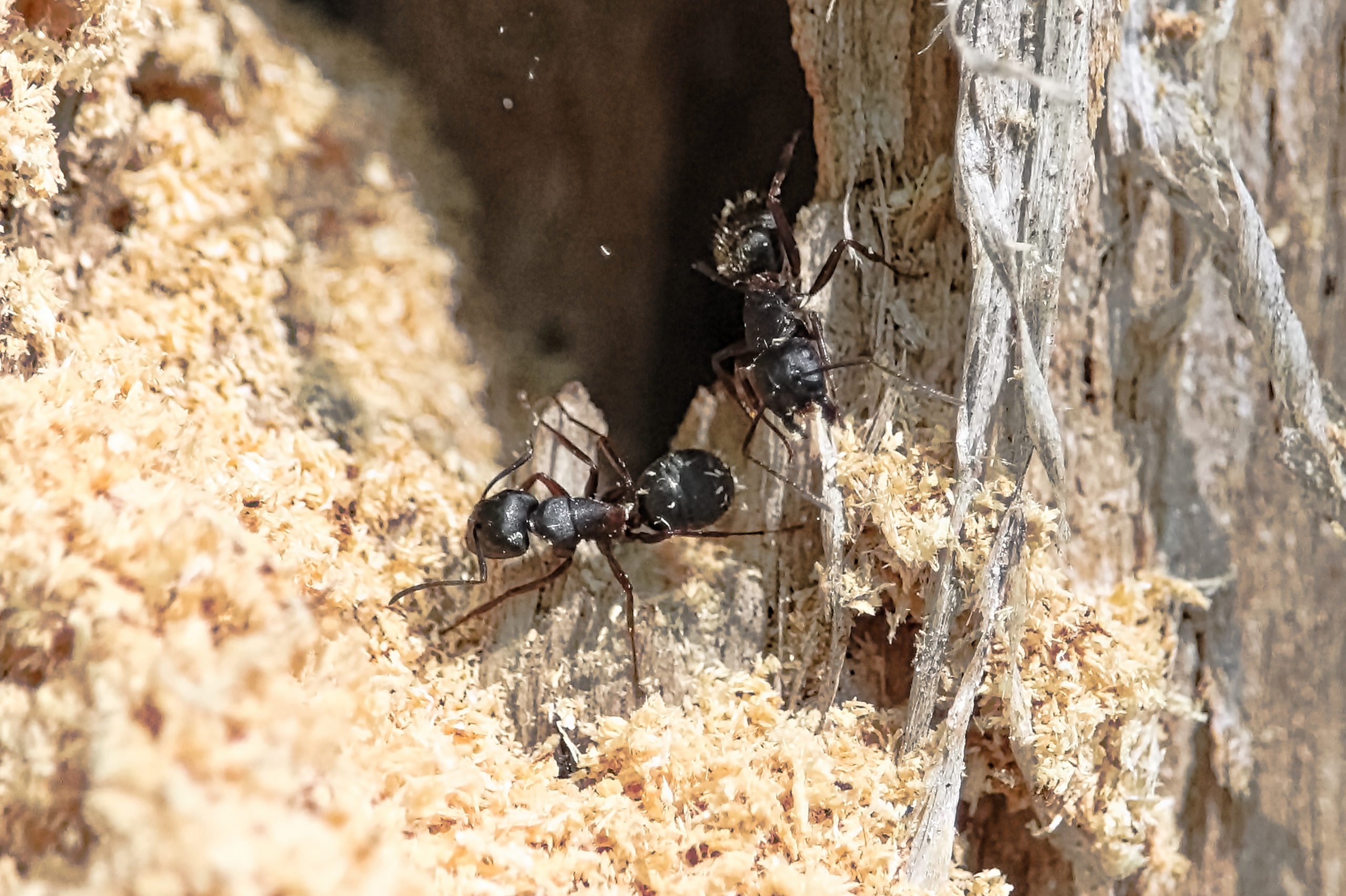
3. Fire Ants (Solenopsis invicta)
Origin: These painful little insects are native to central South America but have made their way up to the north over the years. Appearance: True to their name, these ants are red to brown in color with their gasters (rears) being black. They also have a notable stinger protruding from the very end of the gaster. Size: Workers can vary in size drastically from 2.4 – 6mm within the same colony. Colony Size: Matured colonies are made up of about 80,000 individuals on average but can be up to 250,000. Habitats: These ants form nests in a variety of different kinds of soil but tend to prefer open areas with access to sunlight. As such, they can often be found around farms, pastures, parks, or even golf courses. Behavior: Unfortunately, these ants are well known to be extremely aggressive. Not only do they tend to kill other species of ants, but they have even committed murder within the animal kingdom, taking down small rodents and birds. Their reigns of terror do not stop there however, and they will often target humans as well. During an accidental encounter with a fire ant colony, victims can expect to be stung a few hundred to even several thousand times. Their stings are described as feeling like fire, hence their name. This fiery feeling comes from the fact that their venom contains a toxin similar to piperidine, which is the compound in pepper that gives it it’s sharp, peppery flavor. This causes the itching and burning sensation and, while one sting may be just annoying, the combination of hundreds or thousands of stings can leave you feeling anything but mildly in pain. 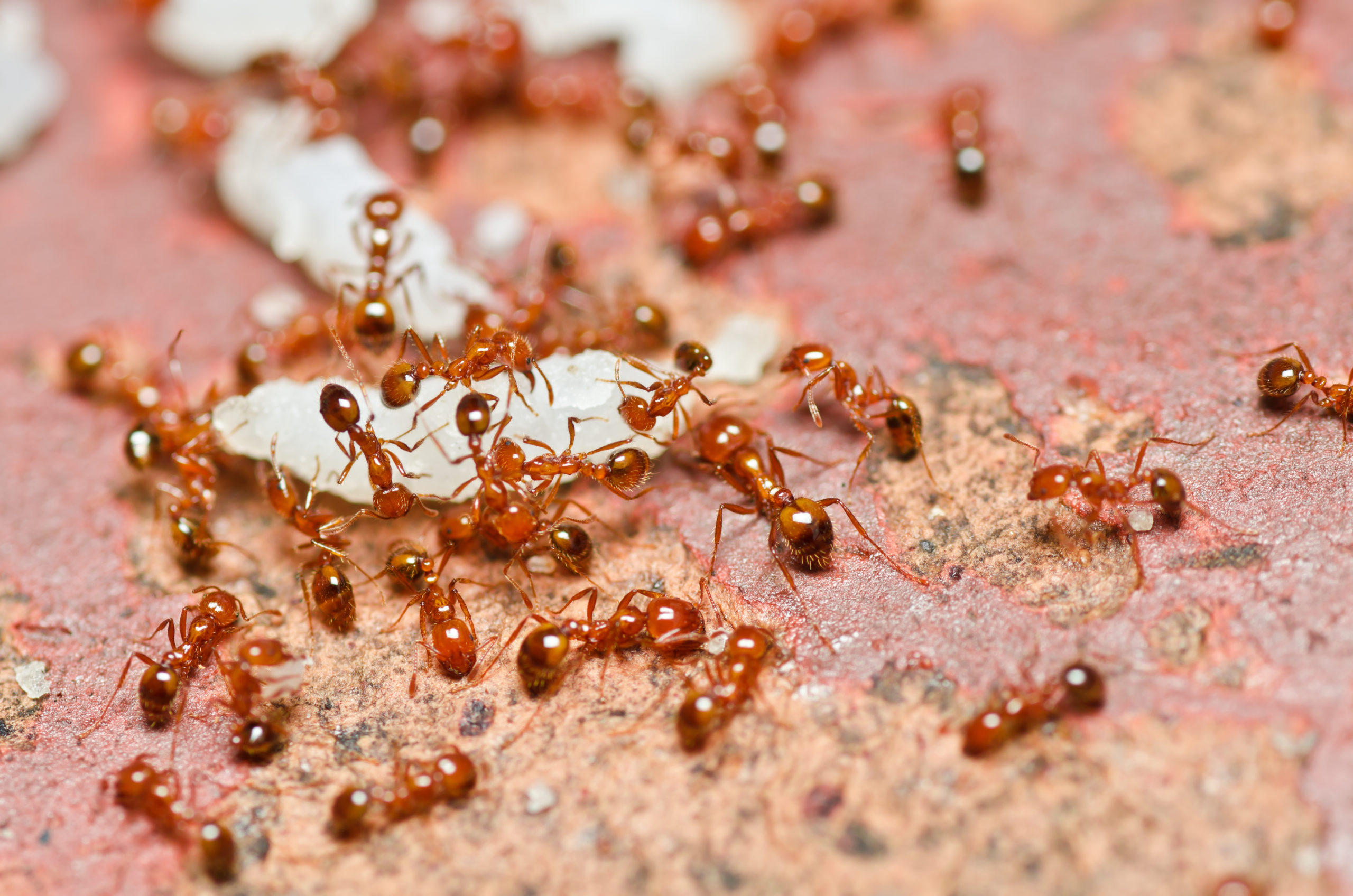
4. Odorous Ants (Tapinoma sessile)
Origin: Odorous ants are native the United States as well as Canada and Mexico Appearance: They are uniform in color and range between dark brown to black. Size: 2.4 – 3.3mm long Colony Size: Their colonies can range from a few thousand to a couple hundred thousand. Habitats: Odorous ants like to nest indoors with a preference for areas that are humid and warm. In some cases, they will also inhabit abandoned termite nests. Behavior: Like many species of ants, they tend to forage for food in our homes and can often be found raiding pantries. However, the unique trait that separates these ants from other common home invaders is their stench. As their name suggests, these ants give off a very unsavory odor if squished. 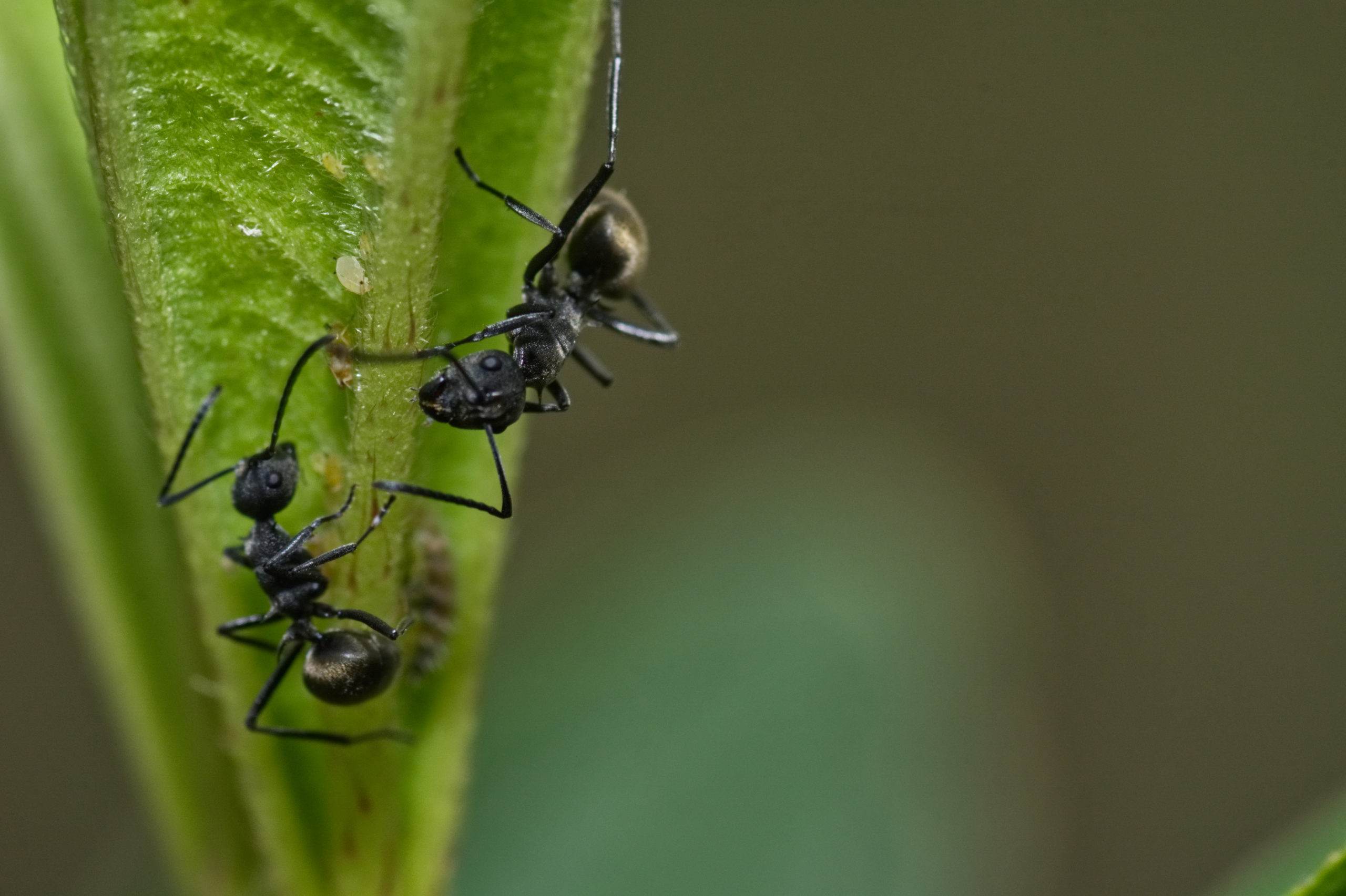
5. Pavement Ants (Tetramorium caespitum)
Origin: These ants originated in Europe but spread to the U.S. during the 1700’s to 1800’s on merchant vessels. Appearance: Dark brown to black with lines down the head and thorax. Size: Workers are about 2.5 – 4mm long, while swarmers/reproductive are about twice that size. Colony Size: These colonies consist of at least 10,000 workers or more. Habitats: Colonies tend to be built beneath rocks, under sidewalks, and below building slabs. Behavior: Pavement ants are avid scavengers and will go after a variety of foods, however, they do tend to prefer sugary/sweet things. 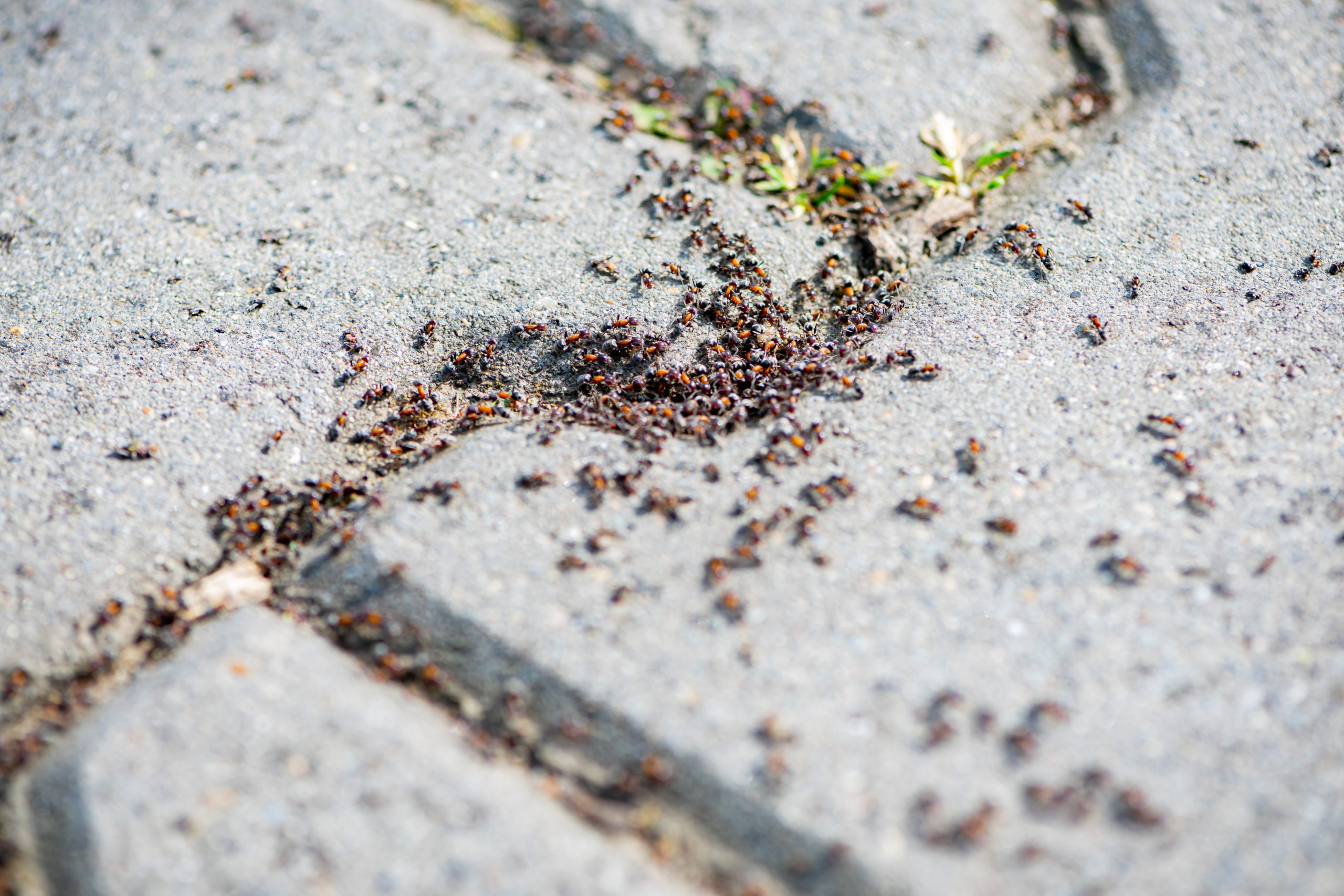
Citations
8 of the Worst Stinging Insects (2017) SciShow. Available at: https://www.youtube.com/watch?v=3NHJjEFk32c&t=322s (Accessed: May 2020). Collins, L. and Scheffrahn, R. (2016) Red Imported Fire Ant – Solenopsis Invicta, University of Florida Entomology Department. The Florida Department of Agriculture and Consumer Services. . Available at: https://entnemdept.ufl.edu/creatures/urban/ants/red_imported_fire_ant.htm (Accessed: December 3, 2021). Daugherty, M. (2020) Argentine Ant, Center for Invasive Species Research. Available at: https://cisr.ucr.edu/invasive-species/argentine-ant (Accessed: December 3, 2021). Fire ant frequently asked questions (2012) Texas Imported Fire Ant Research and Management Project. Texas A&M University. Available at: https://fireant.tamu.edu/manage/faq/ (Accessed: December 3, 2021). Hahn, J. and Kells, S. (2020) Carpenter ants, UMN Extension. University of Minnesota. Available at: https://extension.umn.edu/insects-infest-homes/carpenter-ants#how-to-find-carpenter-ant-nests-104011 (Accessed: December 3, 2021). Jacobs, S. (2013) Pavement Ant, Penn State Extension . Pennsylvania State University College of Agricultural Sciences. Available at: https://extension.psu.edu/pavement-ant (Accessed: December 3, 2021). Jacobs, S. (2014) Odorous house ant, Penn State Extension. Pennsylvania State University College of Agricultural Sciences. Available at: https://extension.psu.edu/odorous-house-ant (Accessed: December 3, 2021).
Request a Free Quote Today
(We do not share your data with anybody, and only use it for its intended purpose)
